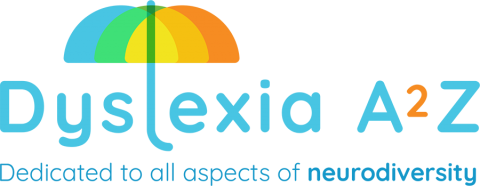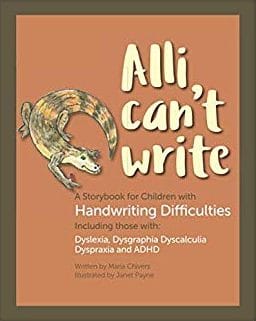Webinar Assistive Technology & NeurodiversityEmpowering Older Adults with the Right Tools Assistive Technology (AT) is incredibly valuable for people of all ages—yet it's often only associated with students. In reality,...

Dyslexia in the Workplace

Dyslexia is a Specific Learning Difficulty (SpLD) that appears as a severe problem with reading, spelling and writing. Many signs of dyslexia in infancy are carried forward into adulthood.
Employers & Dyslexia in the Workplace
- Workplace Needs Assessment
- Access to Work Scheme (AtW) & Dyslexia
- Supported internship/traineeship and (AtW) & Dyslexia
- A Step-by-Step Guide to Creating Accessible Emails for People with Dyslexia
- Neurodiversity in the Modern Workplace
- Disability Inclusion in the Modern Workplace.
Workplace Needs Assessment
If you have problems at work which you believe are related to your dyslexia, you can ask for a ‘Workplace Needs Assessment’. The Assessor will go into your workplace conveniently, watch you work, and consider your opinions (and those of management, if necessary).
You will receive a comprehensive report advising any specific help required, such as Voice Recognition Software (VRS), Spell-checker, Grammar Checker, or other specialist software.
Provided the requirements are ‘reasonable’, your employer will have to look at implementing the recommendations. Often, the company can deliver the items in question at a very reasonable price, which comes under the “reasonable adjustments” that employers should make.
The Dyslexia Association and the British Dyslexia Association (BDA) can arrange assessments or testing, as do other providers around the country.
Do not be afraid to ask for help. Why keep struggling when support is available?
Access to Work Scheme (AtW) & Dyslexia
People with dyslexia or severe learning difficulties can use the Access to Work Scheme (AtW). This scheme (AtW) offers help to place people with learning difficulties (dyslexia) at work. Under this scheme (AtW), you can access training facilities to help with your dyslexia.
The Access to Work (AtW) scheme can provide practical and financial support for people with dyslexia.
The amount of money you may get depends on your circumstances, but these monies do not have to be paid back and will not affect any other benefits.
You do not need a dyslexia assessment to use this scheme.
Supported Internship/Traineeship and Access to Work Scheme (AtW) & Dyslexia
The Supported Internship/Traineeship and Access to Work Scheme (AtW) & Dyslexia cover work placements and trainees and offer excellent advice.
Helping young people on supported internships or traineeships benefit from Access to Work for the work placement element of their study programme.
Supported Internship/Traineeship and Access to Work Scheme (AtW) & Dyslexia
A Step-by-Step Guide to Creating Accessible Emails for People with Dyslexia
by Hannah Walters
Emails that are designed and created with accessibility in mind can make a huge difference for those with dyslexia.
Accessible emails are much easier to read and comprehend, as they provide features such as:
- Larger font sizes
- Higher contrast colour schemes
- Subtitles and captions on audio or video content
- Descriptive alt-texts for images
- Text-to-speech software to interpret the message.
By creating accessible emails, we can ensure that everyone is able to access the same information through email communication, regardless of any disabilities or impairments.
What are accessible emails?
Accessible emails are emails that are designed and formatted in such a way that they can be accessed and understood by people with disabilities. This typically includes:
- Using large, easy-to-read fonts and avoiding words or phrases that could be difficult to understand.
- Alternative text (alt-text) descriptions for any images or videos
- Descriptive email links – using screen readers will give a better understanding of the website being linked.
Accessible emails for dyslexia
Emails can be tricky for people with dyslexia since emails often contain a lot of written information. People who have dyslexia may find it difficult to read the text in emails, as words and sentences appear scrambled or confusing. Additionally, emails may contain images that cannot be properly interpreted without an accompanying text description or alternative text (alt-text). As a result, emails can be hard to understand and process for those with dyslexia. Screen readers can help people with dyslexia by providing an audio format of the text that breaks emails into smaller, more manageable chunks. This helps by making the information easier to process and understand.
A step-by-step guide to creating accessible emails for those with dyslexia
Email is a vital communication tool in the modern world and creating accessible emails for those with dyslexia can be a challenge.
Here are some essentials for creating accessible emails:
- Choosing dyslexia-friendly fonts – Sans serif fonts tend to be dyslexia-friendly, and many dyslexic readers prefer them over serif fonts. Try using fonts like Arial or Verdana or dyslexia-specific fonts like Dyslexie or OpenDyslexic.
- Avoid Italics and Bold text – These can make dyslexic readers’ reading experience more difficult.
- Use 1.5 spacing – Emails should be formatted with 1.5 spacing to make them more accessible for dyslexic readers. This allows the text to be read more easily, helping those with dyslexia to comprehend the written content better.
- Avoid using large amounts of text – Dyslexic readers may benefit from a less-text-heavy email. You can get your message across using visuals like graphics and images to supplement text or provide information as an alternative.
- Dyslexia-friendly tech solutions – Third, consider dyslexia-friendly tech solutions like dyslexia readers. Dyslexia screen readers are programs that use text-to-speech technology to read an email aloud for dyslexic readers.
- Font colours – Use font colours that are easy to distinguish. Stick to dark text on a light background or vice versa for the best results. Avoid using multiple colours which may make it harder to read.
- Always test emails – Where possible have dyslexic users review your emails for readability and make any necessary changes before sending them.
Key Takeaways
Screen readers can help people with dyslexia by providing an audio format of the text that breaks emails into smaller, more manageable chunks.
The use of alternative text (alt-text) descriptions for any images or media files can help those with visual impairments understand the content of an email.
Accessible emails should include easy-to-read fonts, descriptive links, and alt-text for all images and videos used.
Accessible emails benefit everyone by making sure that everyone has access to the same information.
Resource List
In the workplace – British Dyslexia Association (bdadyslexia.org.uk)
https://www.liverpool.ac.uk/media/livacuk/computingservices/accessibility/Making_Content_Accessible.pdf
https://www.nhs.uk/conditions/dyslexia/
https://www.wired.com/story/the-best-assistive-technology-dyslexia/
By Hannah Walters
29th January 2023
Neurodiversity in the Modern Workplace
The article mentioned above is an excellent article about how employers can help people in the workplace. It provides an overview of the benefits and challenges of a neurodiverse workforce and guidance on supporting neurodiverse employees.
This article has been written for the US market. However, it does fit in well with the UK workforce, and if anything, the UK is more stringent. So if you look and see what you think, I think it provides some helpful information that may help you at work.
Neurodiversity in the Modern Workplace.
Disability Inclusion in the Workplace
Focusing on inclusivity is essential in an increasingly digital and remote working environment. This guide explores the critical aspects of disability in the workplace, providing insight into how inclusive company policies and working styles tend to be (or tend not to be) and showcasing critical data. This article examines companies’ methods to ensure a more inclusive culture. By making disability inclusion a priority, businesses can help drive motivation, engagement, and talent retention.
https://www.thanksben.com/the-definitive-guide-to-disability-inclusion-in-the-workplace
Dyslexia Test for Adults UK Cost
Dyslexia Test for Adults UK Cost
Many adults don’t know where to go to get tested for adults.
This will be concluded shortly. Sorry for any inconvenience caused.
Accessible Emails for People with Dyslexia
A Step-by-Step Guide to Creating Accessible Emails for People with Dyslexia
by Hannah Walters
Emails that are designed and created with accessibility in mind can make a huge difference for those with dyslexia.
Accessible emails are much easier to read and comprehend, as they provide features such as:
- Larger font sizes
- Higher contrast colour schemes
- Subtitles and captions on audio or video content
- Descriptive alt-texts for images
- Text-to-speech software to interpret the message.
By creating accessible emails, we can ensure that everyone is able to access the same information through email communication, regardless of any disabilities or impairments.
What are accessible emails?
Accessible emails are emails that are designed and formatted in such a way that they can be accessed and understood by people with disabilities. This typically includes:
- Using large, easy-to-read fonts and avoiding words or phrases that could be difficult to understand.
- Alternative text (alt-text) descriptions for any images or videos
- Descriptive email links – using screen readers will give a better understanding of the website being linked.
Accessible emails for dyslexia
Emails can be tricky for people with dyslexia since emails often contain a lot of written information. People who have dyslexia may find it difficult to read the text in emails, as words and sentences appear scrambled or confusing. Additionally, emails may contain images that cannot be properly interpreted without an accompanying text description or alternative text (alt-text). As a result, emails can be hard to understand and process for those with dyslexia. Screen readers can help people with dyslexia by providing an audio format of the text that breaks emails into smaller, more manageable chunks. This helps by making the information easier to process and understand.
A step-by-step guide to creating accessible emails for those with dyslexia
Email is a vital communication tool in the modern world and creating accessible emails for those with dyslexia can be a challenge.
Here are some essentials for creating accessible emails:
- Choosing dyslexia-friendly fonts – Sans serif fonts tend to be dyslexia-friendly, and many dyslexic readers prefer them over serif fonts. Try using fonts like Arial or Verdana or dyslexia-specific fonts like Dyslexie or OpenDyslexic.
- Avoid Italics and Bold text – These can make dyslexic readers’ reading experience more difficult.
- Use 1.5 spacing – Emails should be formatted with 1.5 spacing to make them more accessible for dyslexic readers. This allows the text to be read more easily, helping those with dyslexia to comprehend the written content better.
- Avoid using large amounts of text – Dyslexic readers may benefit from a less-text-heavy email. You can get your message across using visuals like graphics and images to supplement text or provide information as an alternative.
- Dyslexia-friendly tech solutions – Third, consider dyslexia-friendly tech solutions like dyslexia readers. Dyslexia screen readers are programs that use text-to-speech technology to read an email aloud for dyslexic readers.
- Font colours – Use font colours that are easy to distinguish. Stick to dark text on a light background or vice versa for the best results. Avoid using multiple colours which may make it harder to read.
- Always test emails – Where possible have dyslexic users review your emails for readability and make any necessary changes before sending them.
Key Takeaways
Screen readers can help people with dyslexia by providing an audio format of the text that breaks emails into smaller, more manageable chunks.
The use of alternative text (alt-text) descriptions for any images or media files can help those with visual impairments understand the content of an email.
Accessible emails should include easy-to-read fonts, descriptive links, and alt-text for all images and videos used.Accessible emails benefit everyone by making sure that everyone has access to the same information.
Resource List
In the workplace – British Dyslexia Association (bdadyslexia.org.uk)
https://www.nhs.uk/conditions/dyslexia/
https://www.wired.com/story/the-best-assistive-technology-dyslexia/
By Hannah Walters
29th January 2023Support Groups for Adults with Dyslexia
Support Groups for Adults with Dyslexia
Support Groups for adults with dyslexia; are an excellent way to meet other dyslexic people. This way, you can get ideas from others and help and support from your peers.
Many groups have inspirational speakers who can talk about various issues surrounding dyslexia, coping strategies, resources etc.
You will find a list of various Adult Dyslexia Support Groups below:
London Adult Support Group
A self-help group that shares experiences and learns from each other.
London Adult Support GroupBirmingham Adult Support Group (BADG)
‘Badg is self-help, a user-led dyslexic group established in the mid-1990s in Birmingham. It is probably one of the earliest and largest, longest-running adult self-help groups in Europe.’
BADGDyslexic by Nature
The group aim to reduce the social isolation and stigma individuals with dyslexia feel. It covers the Chorlton area of Manchester.
Dyslexia by NatureDAN
The Dyslexia Adult Network (DAN) helps increase awareness of the impact of dyslexia and related conditions on adults.
DANDABBGL – (Dyslexia Association of Bexley, Bromley, Greenwich & Lewisham)
The group offers opportunities to exchange positive experiences and seek practical advice from guest speakers and others within the group.
Dyslexia AssociationDyslexia Foundation
Assists adults with dyslexia across the North-West.
Dyslexia FoundationDyslexia Scotland Adults
With resources, advice and support – ‘make sure dyslexia doesn’t hold you back.
Dyslexia Scotland Adult
Latest Dyslexia Posts
Grandparents – Easter Egg or Educational Toys?
Grandparents/Teachers/Carers - Why Not Swap Easter Eggs for an Educational Game Kids Will Love? Easter is a time of joy, surprises, and little treats—but why not think beyond the usual...
Annual Dyslexia Awareness Dates in 2025
Annual Dyslexia Dates 2025 Helping to Raise Understanding & Awareness of Dyslexia. Each year, organisations, charities, campaigners, and schools participate in various activities to raise awareness of this learning difficulty. ...
Why Should We Bother Learning to Write by Hand?
Why should we bother learning to write by hand? Should we use digital devices, such as laptops, computers, etc.? Does what we use matter as long as a child can...
Annual Dyslexia Dates 2024 Helping to Raise Understanding & Awareness of Dyslexia. Each year, organisations, charities, campaigners, and schools participate in various activities to raise awareness of this learning difficulty. ...
Dyscalculia Conference by Positive Dyslexia Ltd. Dyscalculia Conference by Positive Dyslexia Ltd would like to invite you to their Dyscalculia Conference. In conjunction with Edge Hill University, Lancashire – Dyscalculia...

